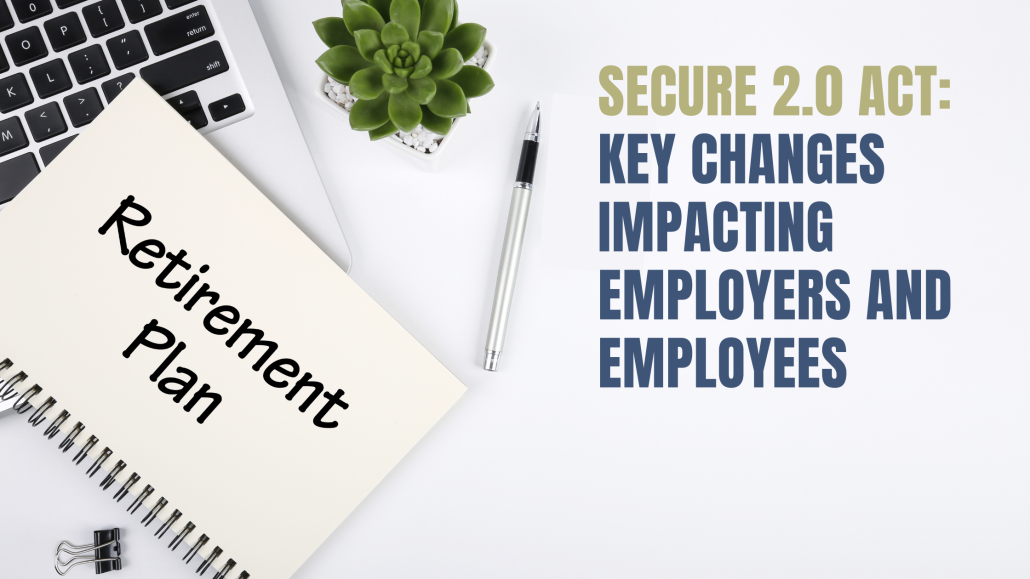
The SECURE 2.0 Act, signed into law in December 2022, aims to enhance retirement options for American workers. This comprehensive legislation introduces several provisions that will have a significant impact on both employers and employees. In this blog post, we will explore the key changes brought about by the SECURE 2.0 Act and how they affect retirement plan providers and their employees.
1. Automatic Enrollment and Contribution Rate:
Starting in 2025, new 401(k) and 403(b) plans must automatically enroll eligible participants at an initial contribution amount between three and 10%. This provision encourages greater participation in retirement plans, ensuring employees secure a solid financial foundation for their future.
2. Plan Portability and Lifetime Income Disclosure:
The SECURE 2.0 Act introduces changes related to plan portability, allowing employees to transfer retirement savings between plans more easily. Additionally, employees will receive lifetime income disclosures, providing them with a clearer understanding of how their retirement savings translate into monthly income during retirement.
3. Required Minimum Distributions (RMDs):
The Act increases the age for required minimum distributions from 72 to 73 in 2023 and will increase to 75 in 2033. This change recognizes the longer life expectancies of today’s retirees and allows individuals to defer withdrawals from their retirement accounts, potentially maximizing their savings.
4. Retirement Eligibility for Part-Time Employees:
Long-term part-time employees, who have worked for at least two years, can now participate in retirement plans. This provision ensures that more part-time workers have access to retirement savings options, promoting financial security for a broader range of employees.
5. Expanded Retirement Savings Options for Self-Employed Individuals:
The SECURE 2.0 Act expands retirement savings options for self-employed individuals. It provides them with greater flexibility to save for retirement through various retirement plan options, such as Simplified Employee Pensions (SEPs) and Savings Incentive Match Plans for Employees (SIMPLE IRAs). Before SECURE 2.0 became law, employees couldn’t treat contributions to SIMPLE IRAs and SEPs as nondeductible Roth contributions.
6. Increased Catch-up Contribution Limits:
To further support individuals approaching retirement, the Act increases catch-up contribution limits in 2025. This allows individuals aged 60 through 63 to contribute additional funds up to $10,000 to their retirement accounts, helping them boost their savings in the later stages of their careers. The catch-up amount for people aged 50 and older in 2023 is currently $7,500.
The SECURE 2.0 Act brings significant changes that impact employers and employees alike. By automatically enrolling eligible participants, enhancing plan portability, and increasing retirement savings options, the Act aims to provide American workers with greater financial security in their retirement years. Employers should familiarize themselves with these key changes to ensure compliance and assist their employees in making the most of these new provisions. Employees, on the other hand, should take advantage of the expanded opportunities to secure their financial future.


